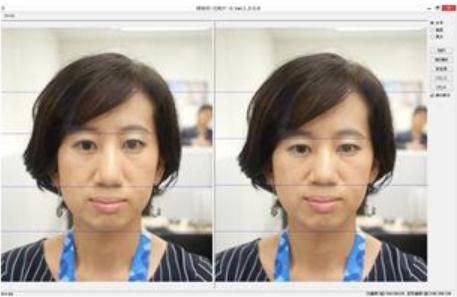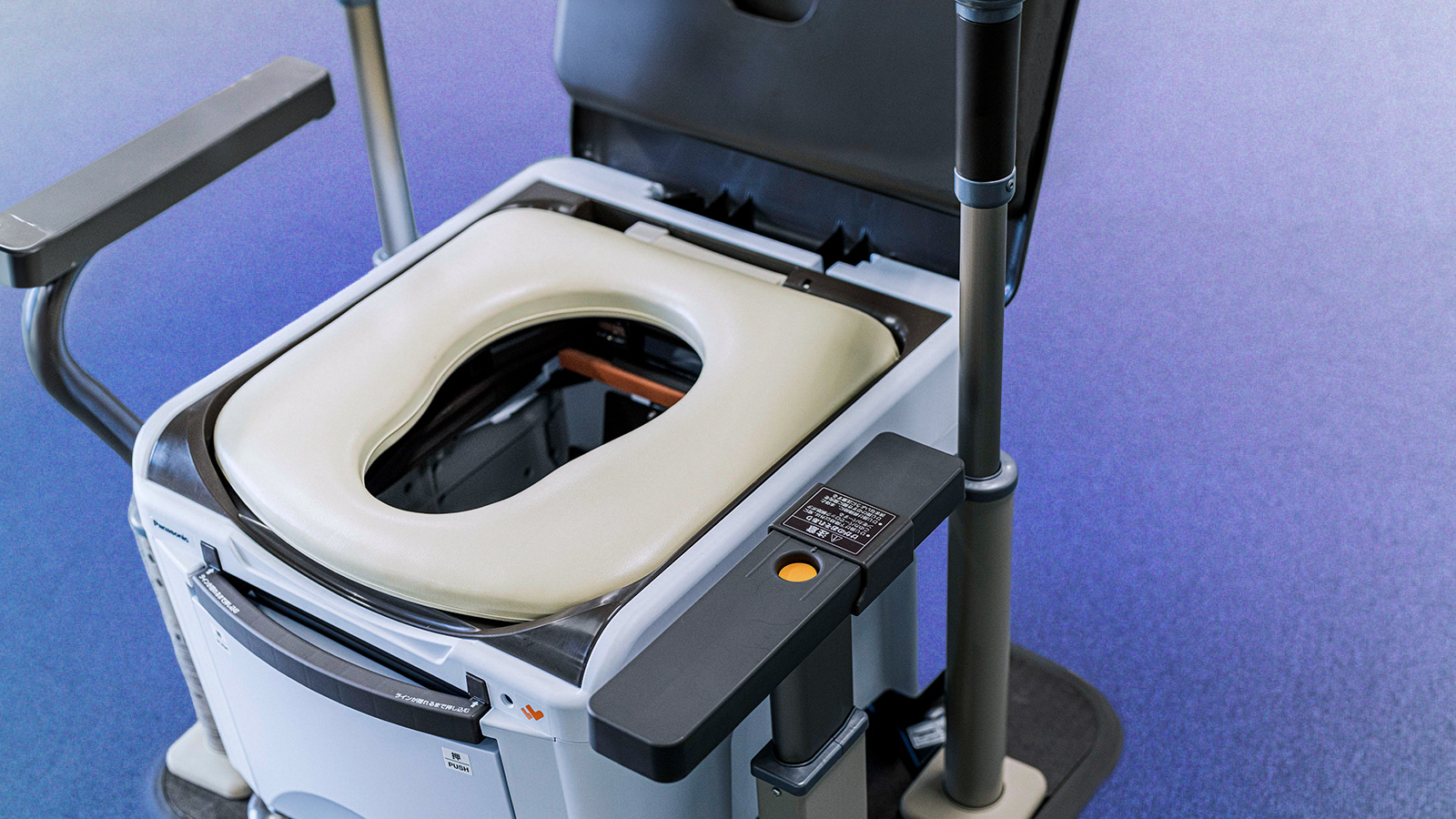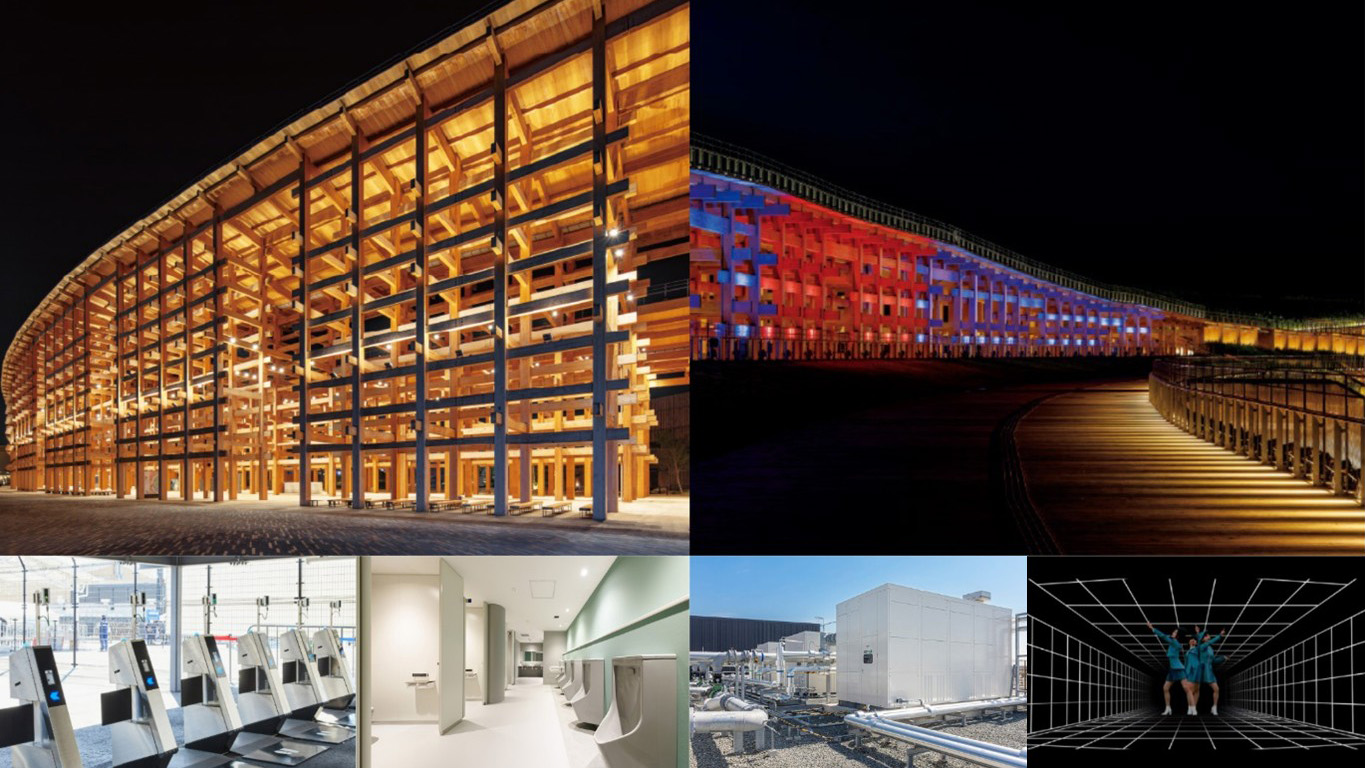Osaka, Japan - Utilizing image recognition and processing technologies cultivated through digital cameras, etc. Panasonic Corporation has developed an industry-first* "Makeup Design Tool," which lets users intuitively and easily design makeup by using a touch pen and applying makeup to a facial photograph. Working closely with professional makeup artists, Panasonic has transformed "makeup," which has traditionally been an analog technology, into digital.
Moreover, using facial recognition technology, the makeup designed can be applied to different facial photographs. With the video simulation mode, makeup can also be applied to moving facial images taken with a video camera.
The tool may be used for a wide range of applications, for example, as a communication tool that can be used by beauty advisors to speak to customers at cosmetic counters, to recommend makeup to customers at photo studios, wedding venues, beauty salons, and by beauty and cosmetology schools to create educational materials and for makeup technique training.
The "Makeup Design Tool" will be showcased and will available to experience in the Panasonic booth at "CEATEC JAPAN 2017" (October 3 - 6, Makuhari Messe).
*As of September 27, 2017 - As a tool that allows users to apply makeup to facial photographs and offers a video simulation option (according to Panasonic research).
Existing challenges
Challenges faced at cosmetic counters
When beauty advisors provide makeup advice to customers at cosmetic counters, not only does it take time, customers do not always like the way the makeup turns out. Furthermore, the skills of beauty advisors vary.
Challenges faced by makeup artists
When makeup artists and directors and actors, actresses get together to discuss makeup, they often refer to designs created on paper or conceptual photographs, but it is still difficult to share one's vision. And sometimes, when the makeup is actually applied to models and actors, actresses, it turns out differently.
Features
1. Design freely, as though you are actually applying makeup
You can design makeup as though you are actually applying makeup. The tool replicates the colors and textures of cosmetics, and the brush tool can actually respond to pen pressure to apply a denser colored makeup. The brush tip size can also be adjusted.
2. Visualizing makeup process and know-how
All the know-how for each process involved in the application of makeup, from how to apply colors or layers, how to move the brush, etc. can be recorded and used as reference.
3. Design support functions
Using facial recognition technology, the tool analyzes the proportions of one's face, which is fundamental when applying makeup (the balance of each part of one's face such as the eyes or nose) and displays tips on how to apply makeup. For example, the tool analyzes the balance when one's face is divided vertically into 3 parts (compared against equal proportions), and can show tips on how to apply makeup for a better balance using any facial image.
4. Video simulation mode
The makeup designed can be superimposed on moving facial images captured by the same tablet to simulate what it would look like under actual lighting.
Effect
Application at cosmetic counters
Using a tablet, beauty advisors can design makeup freely, arrange colors, and share the image with customers in a very short amount of time. Moreover, in the past, makeup artists could only hand down their knowledge from mouth to ear, or only by showing how it is down, but because this tool records and makes the processes visible, it will help improve and maintain the makeup design skills of beauty advisors at a high level.
Application in the field by makeup artists
By sharing makeup ideas designed for specific models and actors, actresses using their photographs, the tool can prevent makeup artists having to redo the design due to variance between the vision and actual results. Because the makeup can be overlaid on any facial image, the same design can be tested on numerous people, to check beforehand how the design may look on different people, thus helping makeup artists use their time more efficiently.
At beauty and cosmetology schools
The tool's ability to visualize makeup processes and know-how, and the design support functions make it optimal for use in beauty schools and for new, even wider applications.
Future plans
Panasonic has conducted the demonstration experiment together with the "Vantan Design Institute" operated by Vantan Inc. (located in Shibuya Ward, Tokyo, represented by Hiromi Ishikawa), and a special class on digital makeup was held with the Hair and Makeup Department in July this year. The tool will be showcased at the "VANTAN CUTTING EDGE 2017 Osaka Round" on October 7 (location: Creative Center Osaka).
- Disclaimer:
- We would like to note that Panasonic Newsroom is not a place to address personal Customer Service issues. Even though this is not the forum, Panasonic is always eager to resolve your concerns. Our local customer services contacts can be found at Global Support or you can see our list of Social Media Accounts to find the right channel for your queries and concerns.



















